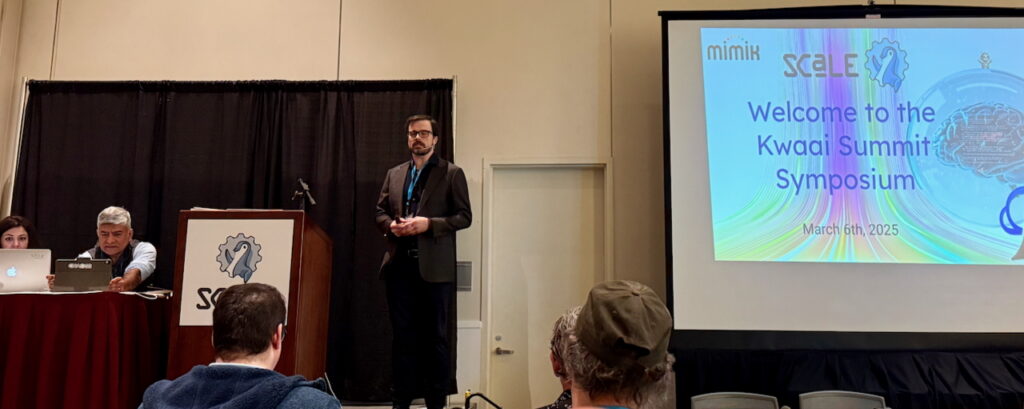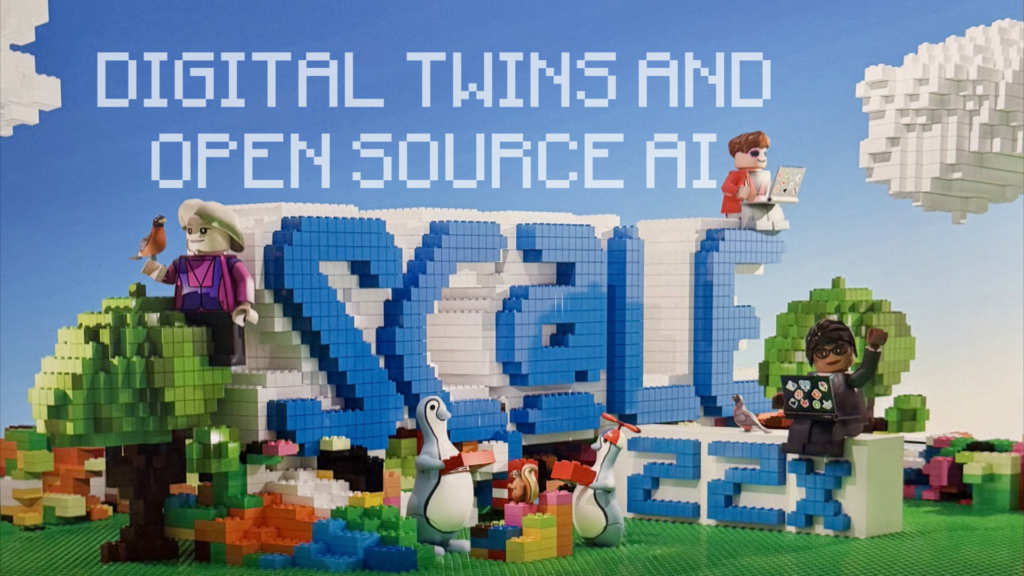Reza Rassool on the Future of Edge Intelligence
LIVE from SCaLE 22x in Pasadena, we’ve been exploring the intersection of open-source AI, digital twins, and smart infrastructure—and the insights keep coming. AI and Digital Twins were supposed to make buildings and cities smarter. But instead, we may be merging two closed ecosystems—creating an even bigger black box. Is there still time to course-correct?

The Kwaai Summit Kicks off at SCaLE
“AI is heading in a dangerous, dystopian direction. It’s our responsibility to do something about it.” – Reza Rassool
I had the chance to sit down with Reza Rassool, Chair of Kwaai, a nonprofit AI Lab dedicated to democratizing AI. Reza’s vision? AI should be owned and operated by its users, not controlled by a handful of corporations. His organization isn’t just talking about it—they’re driving the movement that makes it possible.
Just like the iconic LEGO bricks used at SCaLE, modular and open-source systems are built to connect, scale, and adapt. When each piece follows a shared standard, they fit together seamlessly—whether you’re creating a simple structure or an entire city. But what happens when a few companies decide to own all the pieces and make them incompatible?
That’s exactly what’s happening with AI and Digital Twins today.
Why Digital Twins and AI Must Stay Open—Or Risk Locking Us Out
As Reza described his approach to AI, I realized we’re fighting the same battle in buildings. His frustration with centralized AI monopolies mirrors the struggle we face in the built environment:
- Closed, vendor-locked building systems prevent owners from controlling their own assets.
- Smart buildings that aren’t actually smart—because they don’t talk to each other.
- Proprietary digital twins that promise a single-pane-of-glass but instead trap data in corporate silos.
Reza sees AI following the Linux model—a community-driven movement rather than a corporate-controlled monopoly. Why shouldn’t buildings do the same? Why shouldn’t we own and control our own data, infrastructure, and intelligence?
SCaLE 22x Hackathon: AI for Emergency Resilience
This isn’t just about theory—Reza and his team just wrapped up an emergency preparedness hackathon at SCaLE, where developers built real-world AI solutions for disaster response. These projects went beyond the typical “smart city” hype—instead of closed systems, they used crowdsourced telemetry, decentralized networks, and edge AI to create real, actionable intelligence.
“We challenged developers: What can AI actually do to make communities more resilient? And they built it.” – Reza Rassool
The winning projects included:
- DIY Fire Safety Parties – Neighbors gamifying wildfire risk reduction by organizing local events for brush clearance and home resilience.
- AidPulse – A decentralized peer-to-peer help network, connecting people in need with real-time local responders.
- Deeper Breath, Canary Mask – Smart Wearables for First Responders – AI-driven, networked air-quality monitors that crowdsource real-time environmental conditions.
This decentralized approach to AI-driven emergency response could easily apply to buildings:
- Imagine a building-to-building emergency network that doesn’t collapse when central infrastructure fails.
- Imagine your building’s sensors autonomously sharing critical data with first responders—on your terms, without vendor lock-in.
We’re already working on connection profiles for open-building APIs—and Reza’s work proves edge AI can scale in the same way.
Reza’s message about AI aligns perfectly with what we’re building at C4SB and the Linux Foundation. The same way open-source AI is breaking centralized control, we need open-source digital twins and building intelligence to break free from black-box systems.
Bridging Buildings and AI: A Call to Action
“If you swap ‘AI’ for ‘buildings’ in this conversation, we’re talking about the same problem.” – Kimon Onuma
What’s next? A hackathon focused on making buildings smarter, using edge AI and open systems. At SCaLE 22x, mimik.ai and Kwaai ran a groundbreaking hackathon proving that decentralized intelligence is the key to smarter, more resilient systems., which showcased the potential of decentralized intelligence in critical scenarios.
If we don’t start defining open-source standards for building AI now, we risk repeating the mistakes of proprietary digital twins, leading to even greater vendor lock-in.
Let’s ensure buildings and AI evolve together—on our terms.
Are we headed for an AI-powered, vendor-controlled disaster? Or will open-source intelligence unlock the full potential of Digital Twins? Join the conversation on LinkedIn and help shape the future.
In our next posts, we will cover entries from the hackathon—highlighting the solutions that emerged and what they mean for the future of smart buildings.



